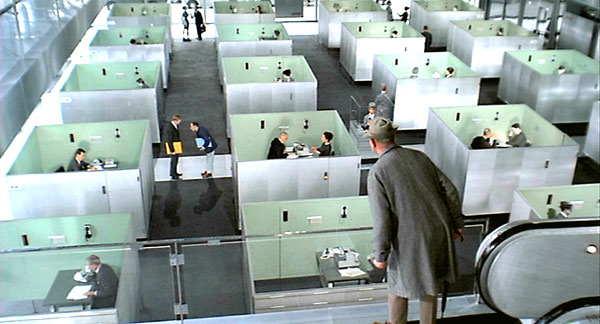Greg Lindsay co-authored the smart book, Aerotropolis, which I’ve blogged about before. In the New York Times, he has a new article about work places arranging their space to overcome “structural holes,” hoping to “engineer” serendipity and creativity. An excerpt:
“ONE reason structural holes persist is our overwhelming preference for face-to-face interactions. Almost 40 years ago, Thomas J. Allen, a professor of management and engineering at M.I.T., found that colleagues who are out of sight are frequently out of mind — we are four times as likely to communicate regularly with someone sitting six feet away from us as we are with someone 60 feet away, and almost never with colleagues in separate buildings or floors.
And we get a particular intellectual charge from sharing ideas in person. In a paper published last year, researchers at Arizona State University used sensors and surveys to study creativity within teams. Participants felt most creative on days spent in motion meeting people, not working for long stretches at their desks.
The sensors in the A.S.U. study were supplied by Sociometric Solutions, a spinoff company of the M.I.T. Media Lab’s Human Dynamics Laboratory that uses ‘sociometric badges’ to measure workers’ movements, speech and conversational partners. One discovery, says Ben Waber, a co-founder of the company and a visiting scientist at M.I.T., was that employees who ate at cafeteria tables designed for 12 were more productive than those at tables for four, thanks to more chance conversations and larger social networks. That, along with things like companywide lunch hours and the cafes Google is so fond of, can boost individual productivity by as much as 25 percent.
‘If you just think of serendipity as an interaction with an unintended outcome, you can orchestrate pleasant surprises,’ says Scott Doorley, a creative director at Stanford University’s Institute of Design.”
Tags: Greg Lindsay

